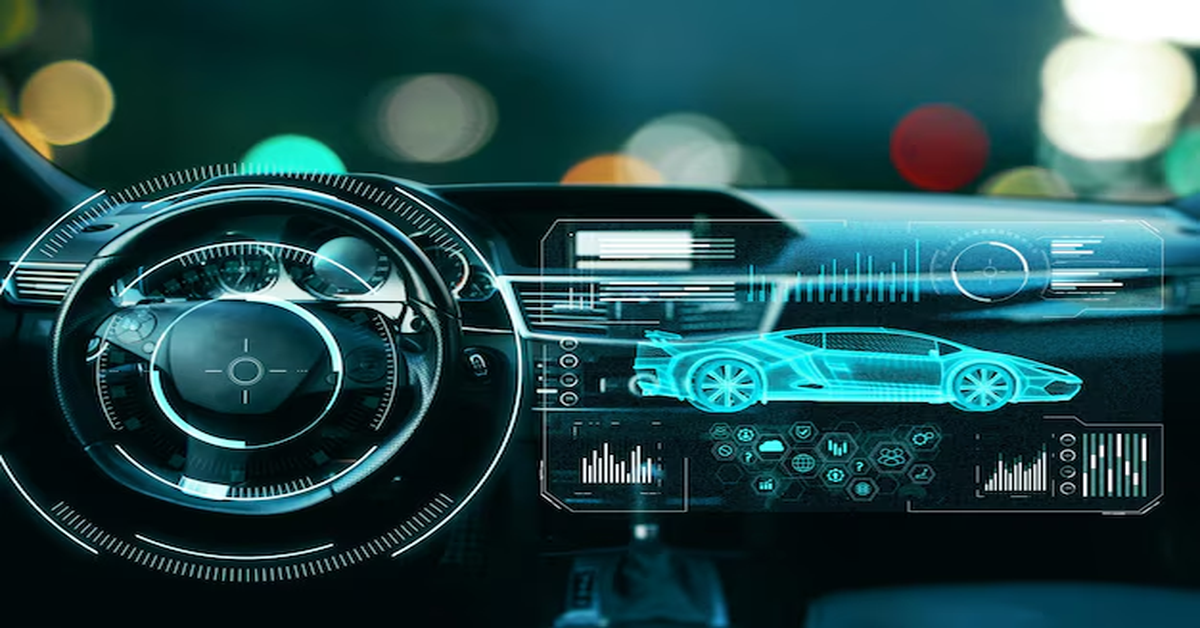As the automotive industry embraces technological evolution, smart and adaptive systems are becoming integral to vehicle performance and passenger safety. One such innovation capturing widespread attention is MotoSAS—a revolutionary platform designed to enhance driving experiences, safety measures, and vehicle diagnostics. As vehicles become more autonomous and connected, MotoSAS is emerging as a critical component in the advancement of transportation systems.
In this comprehensive article, we will explore the key features of MotoSAS, its impact on automotive safety, efficiency, and maintenance, and how it’s reshaping the future of the automobile industry.
What is MotoSAS?
MotoSAS’s, short for Motorized Safety and Adaptive Systems, is a sophisticated technology platform aimed at improving vehicle safety, performance, and operational efficiency. The system integrates advanced sensors, real-time data analysis, and machine learning algorithms to enhance various aspects of vehicle functionality, from driver assistance to predictive maintenance.
MotoSAS’s has applications across multiple vehicle categories, including passenger cars, commercial vehicles, and autonomous transportation systems. By combining traditional automotive engineering with modern software capabilities, MotoSAS delivers significant advancements in road safety and vehicle optimization.
Core Features of MotoSAS
MotoSAS is known for its comprehensive suite of features that address the key needs of drivers and vehicle manufacturers. These include:
1. Advanced Driver Assistance Systems (ADAS)
- MotoSAS’s integrates several ADAS functions such as lane departure warnings, adaptive cruise control, automatic emergency braking, and blind spot detection.
- These features help drivers avoid accidents by providing timely alerts and automated interventions.
2. Real-Time Data Monitoring
- The system continuously monitors key vehicle parameters, including engine performance, tire pressure, fuel consumption, and battery status.
- Real-time data allows for immediate feedback and corrective actions, reducing the risk of mechanical failures.
3. Predictive Maintenance
- Through machine learning algorithms, MotoSAS’s can predict potential mechanical issues before they lead to major failures.
- Predictive maintenance helps reduce downtime, improve vehicle lifespan, and lower repair costs.
4. Collision Avoidance and Impact Mitigation
- MotoSAS’s employs radar, cameras, and LiDAR sensors to detect potential collisions and activate preventive measures.
- In case of unavoidable impacts, the system minimizes damage by controlling airbags, braking systems, and seatbelt tensioners.
5. Connectivity and IoT Integration
- MotoSAS-enabled vehicles are equipped with internet connectivity, allowing them to communicate with other vehicles (V2V), infrastructure (V2I), and smart city networks.
- This connectivity enhances traffic management, navigation, and overall driving efficiency.
6. Adaptive Performance Optimization
- Based on road conditions and driving behavior, MotoSAS’s optimizes engine performance, braking, and fuel consumption to ensure maximum efficiency.
How MotoSAS Enhances Road Safety
One of the primary goals of MotoSAS’s is to improve road safety by reducing accidents and fatalities. The system achieves this through:
1. Early Detection of Hazards
- By constantly scanning the vehicle’s surroundings using advanced sensors, MotoSAS’s identifies potential hazards such as pedestrians, cyclists, or sudden obstacles.
2. Driver Fatigue Detection
- The platform monitors driver behavior through eye-tracking and steering patterns, issuing alerts if signs of fatigue or distraction are detected.
3. Automatic Emergency Responses
- In critical situations, MotoSAS’s can autonomously apply brakes, steer the vehicle to safety, or initiate collision avoidance maneuvers.
4. Enhanced Visibility in Poor Conditions
- With night vision cameras and adaptive headlights, MotoSAS ensures drivers have clear visibility even in low-light or adverse weather conditions.
Impact of MotoSAS on Vehicle Efficiency and Performance
Beyond safety, MotoSAS’s contributes significantly to vehicle efficiency and performance. Here’s how:
1. Fuel Efficiency Optimization
- By analyzing driving patterns and road conditions, the system optimizes fuel consumption, helping drivers save on fuel costs.
2. Engine Health Monitoring
- Continuous monitoring of engine components allows for early detection of wear and tear, ensuring optimal performance and reducing the likelihood of breakdowns.
3. Load Balancing for Commercial Vehicles
- MotoSAS’s adjusts vehicle settings based on load distribution, enhancing stability and minimizing tire wear in trucks and other heavy-duty vehicles.
4. Eco-Friendly Driving
- The platform encourages eco-friendly driving behaviors by providing feedback on acceleration, braking, and idling.
The Role of Machine Learning in MotoSAS
Machine learning is a core component of MotoSAS’s, enabling the system to learn from data and improve over time. Some key applications of machine learning within MotoSAS include:
1. Predictive Analytics for Maintenance
- The system analyzes historical data to predict component failures, allowing for proactive repairs and maintenance scheduling.
2. Personalized Driver Assistance
- By learning individual driving behaviors, MotoSAS’s customizes alerts and suggestions to match the driver’s preferences and habits.
3. Continuous Improvement of Safety Algorithms
- As MotoSAS’s collects more data, its safety algorithms become more accurate in detecting and responding to hazards.
Applications of MotoSAS Across Different Vehicle Types
MotoSAS’s is versatile and can be integrated into various types of vehicles, each benefiting in unique ways:
1. Passenger Cars
- Enhanced safety, improved fuel efficiency, and personalized driving assistance are key benefits for individual car owners.
2. Commercial Trucks and Fleets
- Fleet managers benefit from real-time tracking, load optimization, and reduced maintenance costs, ensuring smooth logistics operations.
3. Autonomous Vehicles
- For self-driving cars, MotoSAS plays a crucial role in sensor fusion, decision-making, and collision avoidance.
4. Public Transportation
- Buses and trains equipped with MotoSAS experience fewer mechanical failures and improved passenger safety.
Challenges and Limitations of MotoSAS Implementation
Despite its numerous benefits, implementing MotoSAS comes with challenges, such as:
1. High Initial Costs
- The installation of advanced sensors, computing systems, and connectivity modules can be expensive.
2. Data Privacy Concerns
- With continuous data collection, ensuring the privacy and security of user data is a critical concern.
3. Integration with Legacy Systems
- Older vehicles may require significant upgrades to accommodate MotoSAS, making retrofitting difficult and costly.
4. Dependence on Network Connectivity
- MotoSAS relies on stable internet connections for real-time data exchange, which may be challenging in remote areas.
The Future of MotoSAS: Trends and Innovations
As technology advances, MotoSAS is expected to evolve with new features and applications:
1. Full Autonomy Support
- MotoSAS will play a key role in fully autonomous vehicles by handling complex navigation and safety decisions.
2. Integration with Smart Cities
- The platform will connect with smart city infrastructure, enabling real-time traffic management and efficient route planning.
3. Electric Vehicle Optimization
- For electric vehicles, MotoSAS will focus on battery health monitoring, charging optimization, and energy-saving driving modes.
4. Over-the-Air Updates
- Continuous software updates will ensure that MotoSAS remains up to date with the latest advancements in vehicle technology.
Conclusion
MotoSAS is transforming the automotive industry by improving safety, efficiency, and overall vehicle performance. With its advanced features and applications, the platform addresses key challenges faced by drivers, fleet managers, and vehicle manufacturers. As the technology continues to evolve, MotoSAS is poised to play a pivotal role in the future of transportation, making roads safer and vehicles smarter.
FAQs
1. What does MotoSAS stand for?
MotoSAS stands for Motorized Safety and Adaptive Systems, a technology designed to enhance vehicle safety and efficiency.
2. How does MotoSAS improve vehicle safety?
It integrates advanced driver assistance systems, hazard detection, and collision mitigation measures to prevent accidents and protect passengers.
3. Can MotoSAS be installed in older vehicles?
While possible, retrofitting older vehicles with MotoSAS may require significant upgrades and could be cost-prohibitive in some cases.
4. Is MotoSAS compatible with electric vehicles?
Yes, MotoSAS can optimize battery health, energy consumption, and charging for electric vehicles, enhancing their performance.
5. How does MotoSAS contribute to fuel efficiency?
The system analyzes driving patterns and road conditions to optimize fuel consumption and reduce unnecessary energy use.
6. What industries benefit most from MotoSAS?
Industries such as logistics, public transportation, and personal vehicle manufacturing benefit significantly from MotoSAS’s applications.







